Environmental Engineering Reference
In-Depth Information
Condensation
Rain clouds
Transpiration
Evaporation
Precipitation
to land
Transpiration
from plants
Precipitation
Precipitation
Evaporation
from land
Evaporation
from ocean
Surface runoff
(rapid)
Precipitation
to ocean
Runoff
Surface
runoff
(rapid)
Infiltration and
Percolation
Groundwater movement (slow)
Ocean storage
Active Figure 3-24
Natural capital:
simplified model of the
hydrologic cycle. See an animation based on this
figure and take a short quiz on the concept.
Solar energy evaporates water found on the
earth's surface into the atmosphere. About 84% of wa-
ter vapor in the atmosphere comes from the oceans;
the rest comes from land.
Some of the fresh water returning to the earth's
surface as precipitation in this cycle becomes locked in
glaciers. And some infiltrates and percolates through
soil and permeable rock formations to groundwater
storage areas called
aquifers.
But most precipitation
falling on terrestrial ecosystems becomes
surface runoff.
This water flows into streams and lakes, which even-
tually carry water back to the oceans, from which it
can evaporate to repeat the cycle.
Besides replenishing streams and lakes, surface
runoff causes soil erosion, which moves soil and rock
fragments from one place to another. Water is the pri-
mary sculptor of the earth's landscape. Because water
dissolves many nutrient compounds, it is a major
medium for transporting nutrients within and be-
tween ecosystems.
Throughout the hydrologic cycle, many natural
processes purify water. Evaporation and subsequent
precipitation act as a natural distillation process that
removes impurities dissolved in water. Water flowing
above ground through streams and lakes and below
ground in aquifers is naturally filtered and purified by
chemical and biological processes. Thus,
the hydrologic
cycle can be viewed as a cycle of natural renewal of water
quality.
Effects of Human Activities
on the Water Cycle
We alter the water cycle by withdrawing large
amounts of fresh water, clearing vegetation and
eroding soils, and polluting surface and underground
water.
During the past 100 years, we have been intervening in
the earth's current water cycle in three major ways.
First,
we withdraw large quantities of fresh water from
streams, lakes, and underground sources.
Second,
we clear vegetation from land for agricul-
ture, mining, road and building construction, and
other activities and sometimes cover the land with
buildings, concrete, or asphalt. This increases runoff,
reduces infiltration that recharges groundwater sup-
plies, increases the risk of flooding, and accelerates soil
erosion and landslides. We also increase flooding by
destroying wetlands, which act like sponges to absorb
and hold overflows of water.
Third,
we add nutrients (such as phosphates
and nitrates found in fertilizers) and other pollutants

















